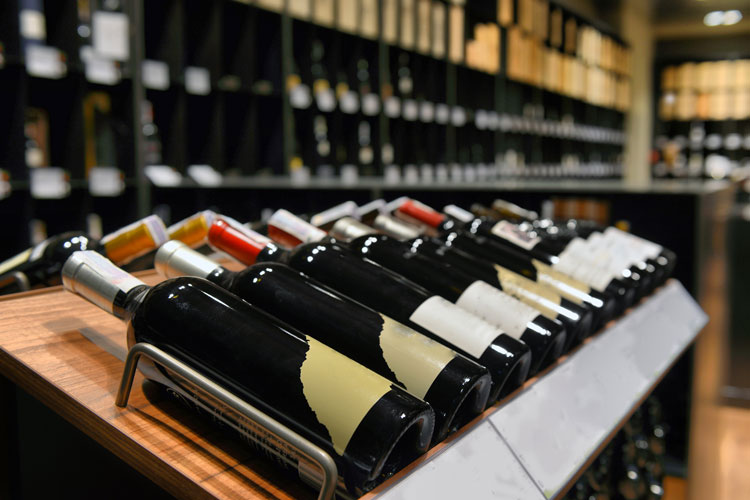Alcohol labelling litigation: spotting red flags and reducing exposure
- Like
- Digg
- Del
- Tumblr
- VKontakte
- Buffer
- Love This
- Odnoklassniki
- Meneame
- Blogger
- Amazon
- Yahoo Mail
- Gmail
- AOL
- Newsvine
- HackerNews
- Evernote
- MySpace
- Mail.ru
- Viadeo
- Line
- Comments
- Yummly
- SMS
- Viber
- Telegram
- Subscribe
- Skype
- Facebook Messenger
- Kakao
- LiveJournal
- Yammer
- Edgar
- Fintel
- Mix
- Instapaper
- Copy Link
Posted: 11 May 2022 | Alan Pryor, Angela Spivey | No comments yet
Attorneys Angela Spivey and Alan Pryor discuss the top trends in alcohol beverage litigation in the US and what those trends reveal about best practices for alcohol producers, to lessen their exposure and strengthen their defences.


“May you live in interesting times.” It is a wry expression and a favourite of people in search of the most bland, uninteresting of times. Recently, however, alcohol producers have experienced those ‘interesting times’ first-hand in the current litigation environment.
The alcohol beverage industry has enjoyed tremendous innovation in the past few years as new hard seltzers, flavoured distilled spirits and ready-to-drink beverages have come to market. With this rush of new products, alcohol beverage producers are increasingly positioning them as traditional beverage products to better appeal to consumers. An aggressive plaintiffs’ bar – ie, attorneys who generally represent plaintiffs – which has pushed food and beverage class action filings to historic levels in recent years, has taken note and is leveraging its food and beverage experience to mount serious legal challenges to alcoholic beverages.
Litigation trends and labelling red flags
Copycat lawsuits tend to follow successful litigation outcomes, and that trend has continued in the alcohol space as the plaintiffs’ bar uses traditional food and beverage litigation tactics to challenge alcohol beverage labelling and advertising. So far, plaintiffs have achieved their greatest successes by claiming they were deceived by implied claims that appear nowhere on a product’s label.
One plaintiff took aim at Vizzy Hard Seltzers, alleging the drinks falsely imply that they are healthy (or at least healthier than other hard seltzers), which the plaintiff claimed is out-of-bounds for alcoholic beverages. Yet Vizzy Hard Seltzers do not make any such claim on their labels. Rather, the plaintiff focused on the language “With antioxidant vitamin C from acerola superfruit” – presumably, an accurate, truthful statement – to claim that the hard seltzers make a false implied health claim. New alcoholic beverage products increasingly make “better-for-you” claims (lower proof, electrolytes, antioxidants, vitamins), so if the alcohol industry hasn’t taken note of the Vizzy case, it should.1
In another case, a plaintiff alleged that the Ritas product line falsely implies that its products contain tequila, rum, vodka or wine as its alcohol base when they actually are malt beverages. Much like in the Vizzy case, the Ritas products do not state that they contain distilled spirits or wine. Nevertheless, the plaintiff challenged the product names themselves – Lime-a-Rita, Sangria Spritz, Rosé Spritz, Mojito Fizz and Cosmo Fizz – claiming they make false implied claims about the alcohol used to make these products.2 Still other lawsuits take issue with flavoured alcoholic beverages, alleging their flavour claims imply the products contain the actual ingredient, not just flavouring (eg, a black cherry hard seltzer is misleading because it only has black cherry flavouring, not black cherries, in the beverage.3
This demonstrates a difficult – but important – lesson for US products: technical accuracy is not a perfect shield. Even a wholly accurate beverage label presents risk if its overall appearance is potentially misleading to consumers.
Best practices
Although cautionary tales, these cases provide useful insight into what steps alcoholic beverage producers and retailers can take to reduce their risk exposure. Of course, the best defence is the one that never needs to be used. It is possible to have labelling that both is marketing department-friendly and deters litigation and/or sets up viable motion-to-dismiss arguments in the event of a lawsuit. It just requires having the right processes in place:
- Develop a formal label review and approval process, so that marketing and legal teams work together (rather than against each other). Producers are more likely to check all boxes with an engaged, collaborative team
- Take extra care to scrutinise labels for implied claims (health, flavouring, cocktail and nutrients claims), particularly as new alcoholic beverages come under increased legal scrutiny
- Make greater use of disclaimers and qualifying language on the consumer-facing labelling and packaging. Some of the greatest litigation risk lies with implied, unclear, ambiguous or undefined terms. Use of disclaimers or qualifying language is an effective tool to counter any claim of consumer confusion.
- Note: A disclosure on the bottom of the packaging will only impact the most fastidious of consumers, but a clear, unambiguous disclosure on the front of packaging may discourage prospective litigants from filing a suit and strengthen a motion to dismiss defences even if a lawsuit is filed.
References
- Marek v. Molson Coors Beverage Company, No. 3:21-cv-07174 (N.D. Cal.).
- Browning v. Anheuser-Busch LLC, No. 4:20-cv-00889 (W.D. Mo.).
- See, e.g., Galvez v. The Boston Beer Company, Inc., No. 3:21-cv-01508 (S.D. Cal.).
About the authors:




Related topics
Beverages, Labelling, Packaging & Labelling, Regulation & Legislation, retail









